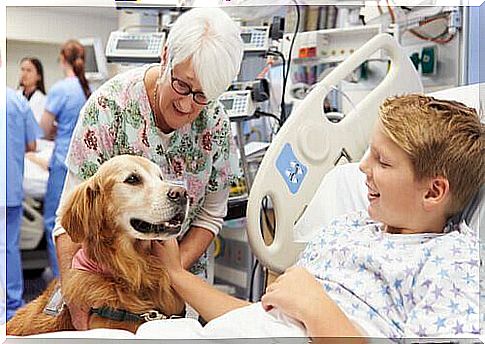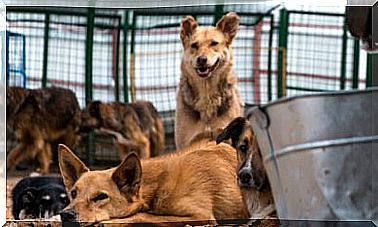What Are The Legal Aspects Of Pet Therapy?

Pet therapy is an increasingly used resource. They are interactions led by health and education professionals. In them, the link between the patient and the animal is the means for rehabilitation. They are used in very different cases and the general opinion is that the results are excellent. However, what are the legal aspects of pet therapy?
Although these therapeutic strategies have spread in these times, their use is actually very ancient. Greek mythology recognizes Chiron, half man and half horse, who had the ability to heal humans and animals.
There is evidence documenting how pet therapy was already being used in 1792 in a rehabilitation center for people with mental disorders in England. For example, there are also past records showing the use of animals to assist patients with epilepsy.
In the specific case of Italy, pet therapy is known by the acronym of IAA or Assisted Interventions with Animals and its application is legally regulated.
There are also international associations and foundations that work to foment this therapeutic model. One example is the Affinity Petcare foundation, which since 1987 has begun to spread the benefits of pets in society.
Currently, there are several clinics and hospitals that offer these animal therapies. Furthermore, there are cases in which this method has even been used in some prisons, especially for inmates with affective deficits and emotional instability.
No one is surprised that animals are good for people’s health. It is increasingly evident that pets occupy a privileged place in many people’s lives. When these relationships are mediated by a professional, as in the IAA, the results are optimal.

Legal aspects of pet therapy: animal welfare
Although animal-assisted interventions date back many centuries, the consideration of the animal as a subject to be treated is quite recent. The multiple voices in defense of animals are heard and ask for respectful treatment.
Nowadays, many professionals have been involved in this concept of therapeutic strategy that cares for both the patient and the animal. Coming from different fields of health and human life, they work in strengthening the protocols of attention to the animal that participates in the therapies. The idea is to avoid exploitation.
Currently, also in many countries of the world there are national laws that regulate the application of therapies with animals. For example, this is the case in some countries in South America.
Although in Italy animal assisted interventions (IAA) are legally regulated, there are also associations that have taken on the responsibility of promoting these activities. The goal is to avoid behaviors that can be harmful both to the people receiving the therapy and to the animals themselves. At the same time, they offer preparation and training to those who want to become technicians in animal assisted interventions.
Code of ethics in therapies
Action protocols have been developed to help establish the legal aspects of pet therapy and therapy conditions in the context of animal welfare.

For example, the Affinity Petcare Foundation has outlined some basic precepts for working with therapy animals. Among the most important principles are:
- Animal welfare must come before therapeutic activity. This means that animals cannot be mistreated or exposed to adverse circumstances under the pretext of therapy.
- The therapist needs to be alert to signs of stress, anxiety or fear in animals, as well as their physical states.
- If an animal shows any conflict with a person, the interaction should not be forced.
- Each session has a set time which must not be exceeded. This time is determined taking into account both the person in therapy and the collaborating animal.
- A medical examination of the animals is essential.
- The animal must be free to express its normal natural behaviors expected in its species. This implies that he acts without fear and distress, which will result in emotional and behavioral behavior appropriate to the task.
What happens if animal abuse is detected during therapy sessions? It may be necessary to resort to regional or national legislation on animal protection.
Conclusion on the legal aspects of pet therapy
There is no doubt that professionalism in pet therapy requires an investment of effort and money. Quality, professionalism and ethics have costs. When choosing a center, it is important to make sure of the terms of service. If the session has been well developed, there will be a good balance that will benefit all participants.








